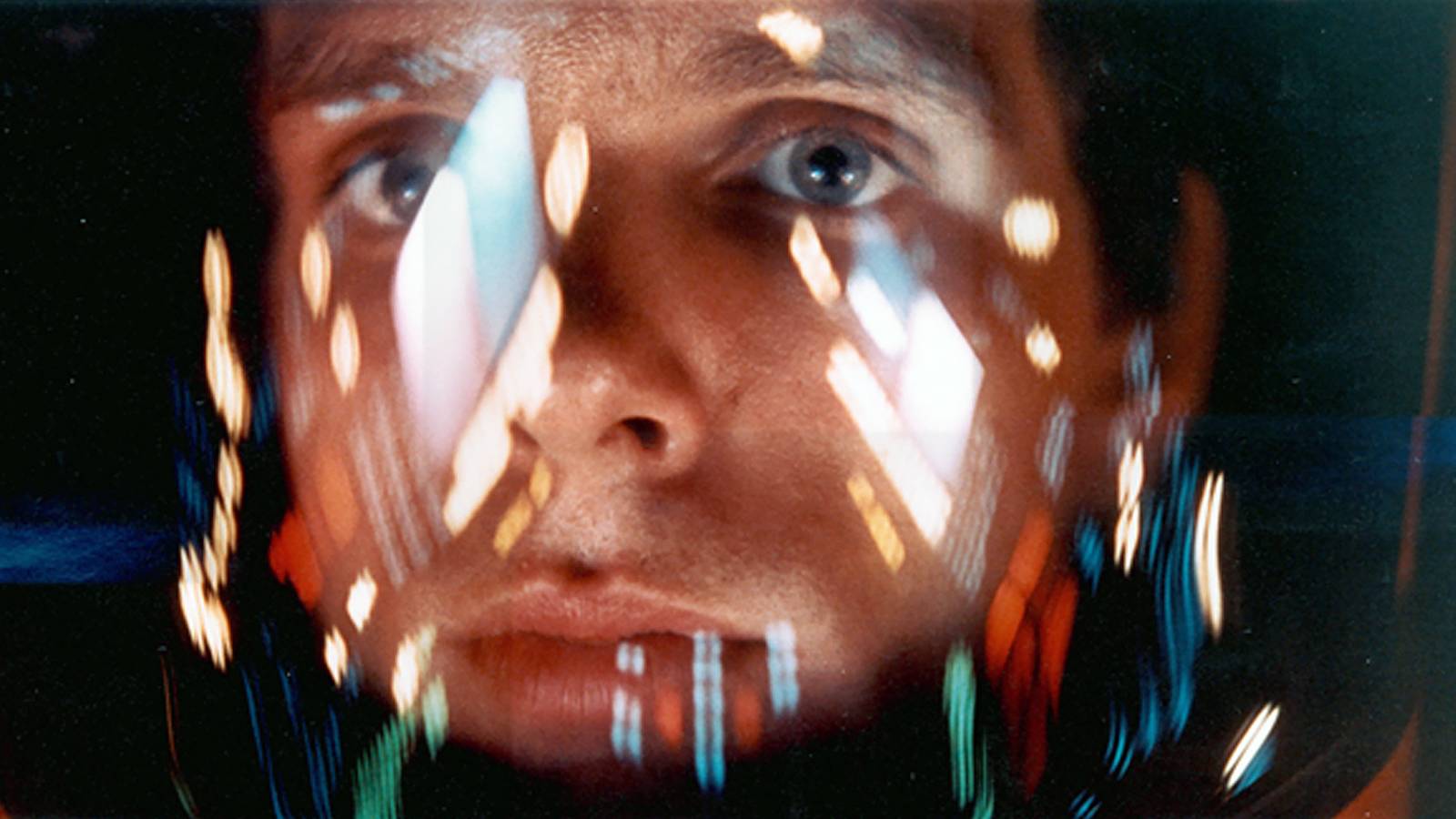Cinema entertains with its well-crafted narratives, drawing viewers into stories they feel and characters they care about. However, it (arguably) conquers with its visuals. A film can be a true feast for the eyes, a canvas where composition, light, and color combine to take our breath away. In this way, it ultimately transcends entertainment to become a sensory experience and a language all its own.
Lucky for us, filmmakers and their incredible crews have pushed the boundaries of visual storytelling over the past century, crafting imagery that lingers after the screen turns black. More than telling stories, these films paint emotions and philosophies with unmatched artistry. To celebrate them, we look back at some of the most visually striking films of the last 100 years, analyzing what makes each mesmerize, inspire, and redefine what cinema can achieve.
10
‘The Lord of the Rings: The Fellowship of the Ring’ (2001)
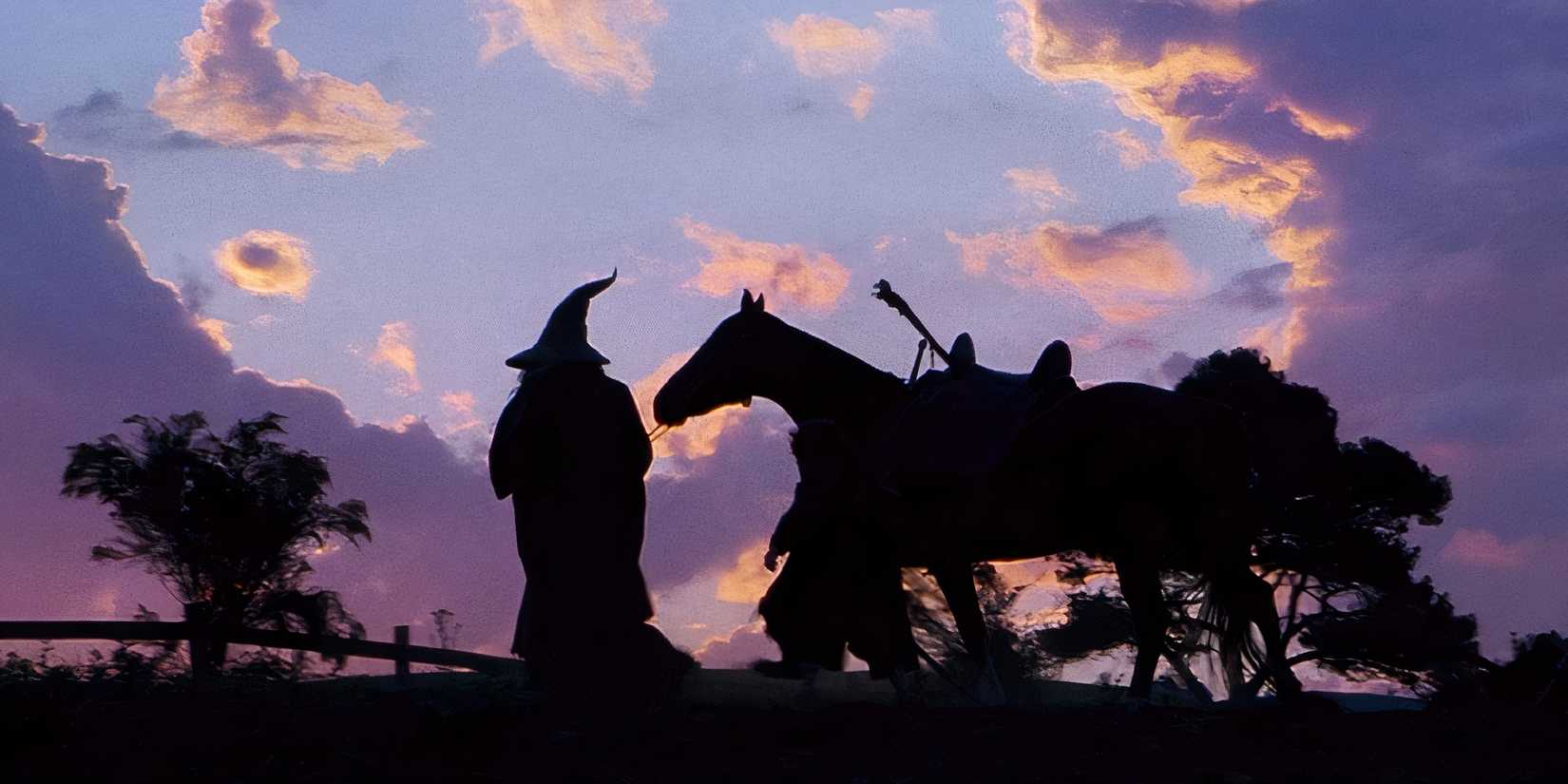
The Lord of the Rings: The Fellowship of the Ring cinematographyImage via New Line Cinema
The Fellowship of the Ring is one of the most groundbreaking fantasy films of all time, and it’s easy to see why. Based on J.R.R. Tolkien’s epic books, this sprawling fantasy epic showcases some of the most breathtaking, otherworldly landscapes caught on camera as it follows Hobbit Frodo Baggins (Elijah Wood) and eight companions on a quest to destroy the One Ring and prevent the Dark Lord Sauron from conquering Middle-earth.
Peter Jackson’s fan-favorite film was shot across more than 150 diverse, stunning real-life locations throughout New Zealand, capturing the landscapes that bring the fictional world vividly to life. What really sets it apart, though, is the magic behind its production: the pioneering The Fellowship of the Ring integrates large-scale practical sets with pioneering CGI, blending digital and physical effects to create immersive world-building. Not only did this astonish audiences, but it also rewrote the rulebook for fantasy filmmaking, cementing LOTR as a legendary leap for cinema.
9
‘Paris, Texas’ (1984)
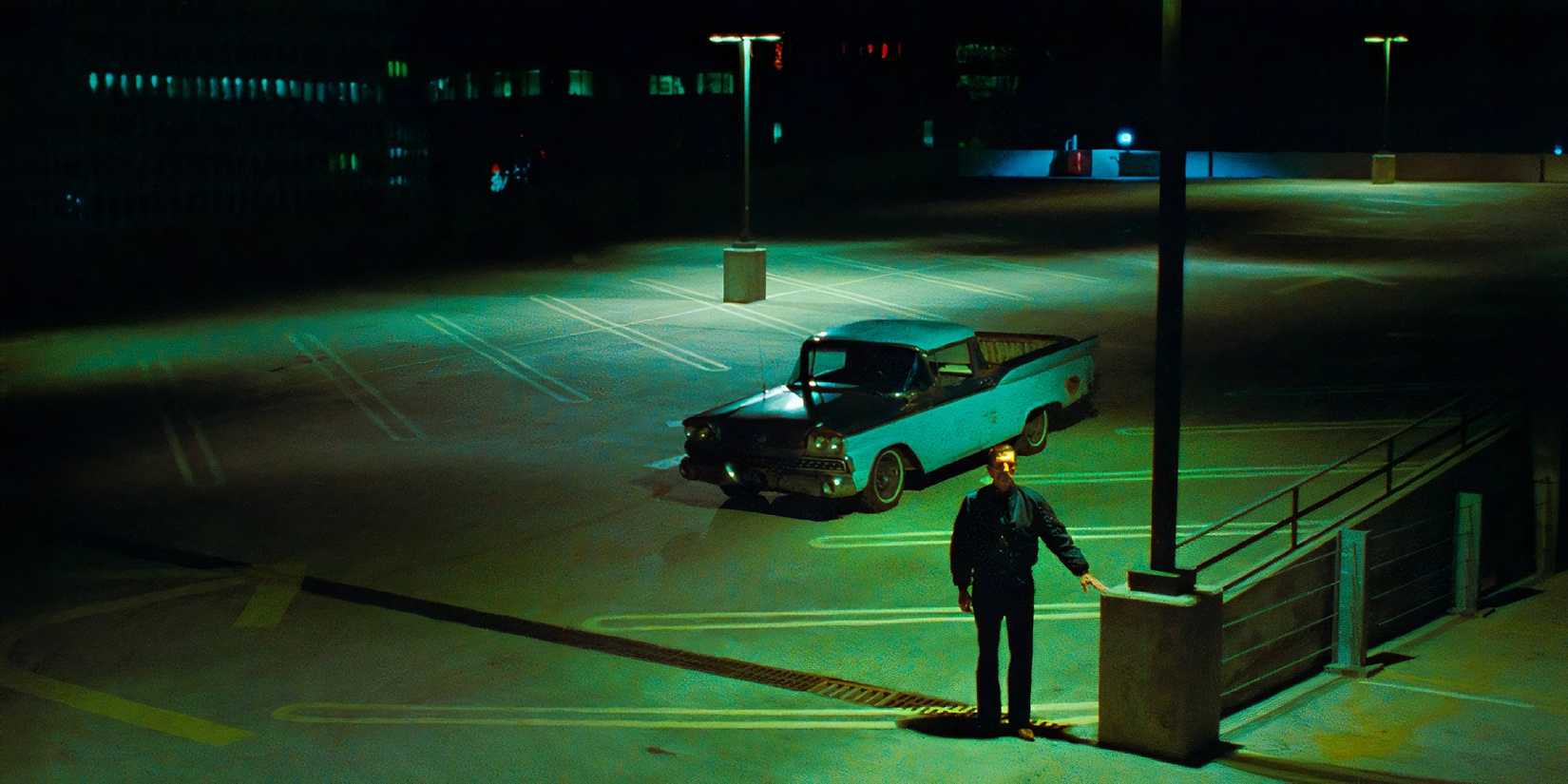
A shot of a parked car in Paris, TexasImage via 20th Century Studios
Directed by talented filmmaker Wim Wenders, this cult favorite illustrates the story of a man (Harry Dean Stanton) who mysteriously reappears after four years lost in the Texas desert. As Travis slowly reconnects with his young son and estranged wife, Paris, Texas offers a poignant meditation on human fragility, isolation, and the possibility of healing through confronting the past.
Beautifully shot on 35mm film and anchored by Robby Müller’s evocative cinematography, Paris, Texas is a masterclass in striking minimalism. It transports audiences to authentic American West locations, with simple yet beautiful imagery that encapsulates the feel of its natural sunlight and lived-in colors. It’s the perfect pick for movie enthusiasts who find beauty in stillness and the mundane (Wenders recently directed Perfect Days, after all). Through slow pans, still shots, and a restrained palette punctuated by occasional bursts of color, this atmospheric drama is worth checking not merely for its moving narrative but for the striking visuals, too.
8
‘In the Mood for Love’ (2000)
Taking place in the heart of 1960s Hong Kong, this Asian cinema epic follows two neighbors, each trapped in lonely marriages, as they form a forbidden but undeniably irresistible connection. Visually, it’s a treat — classic Wong Kar-wai — supported by nostalgic and melancholic undertones that perfectly evoke the bitterness of unfulfilled desire.
If you’re ready to dive into In the Mood for Love, prepare for a feast of warm, muted hues — think rich reds, ambers, and greens that saturate the frames, punctuated by the flash of over 20 exquisite chenongsams that do more than delight the eye, symbolizing Mrs. Chan’s emotions and constraints that bind her. The cinematography is full of carefully composed shots, frames within frames, and soft, painterly lighting that makes the story feel almost dreamlike. It’s no surprise this film has such a devoted following: In the Mood for Love is genuinely as touching, restrained, and beautiful as they say, resulting in a true gem for anyone who loves films that linger in both the eyes and the heart.
7
‘The Tree of Life’ (2011)
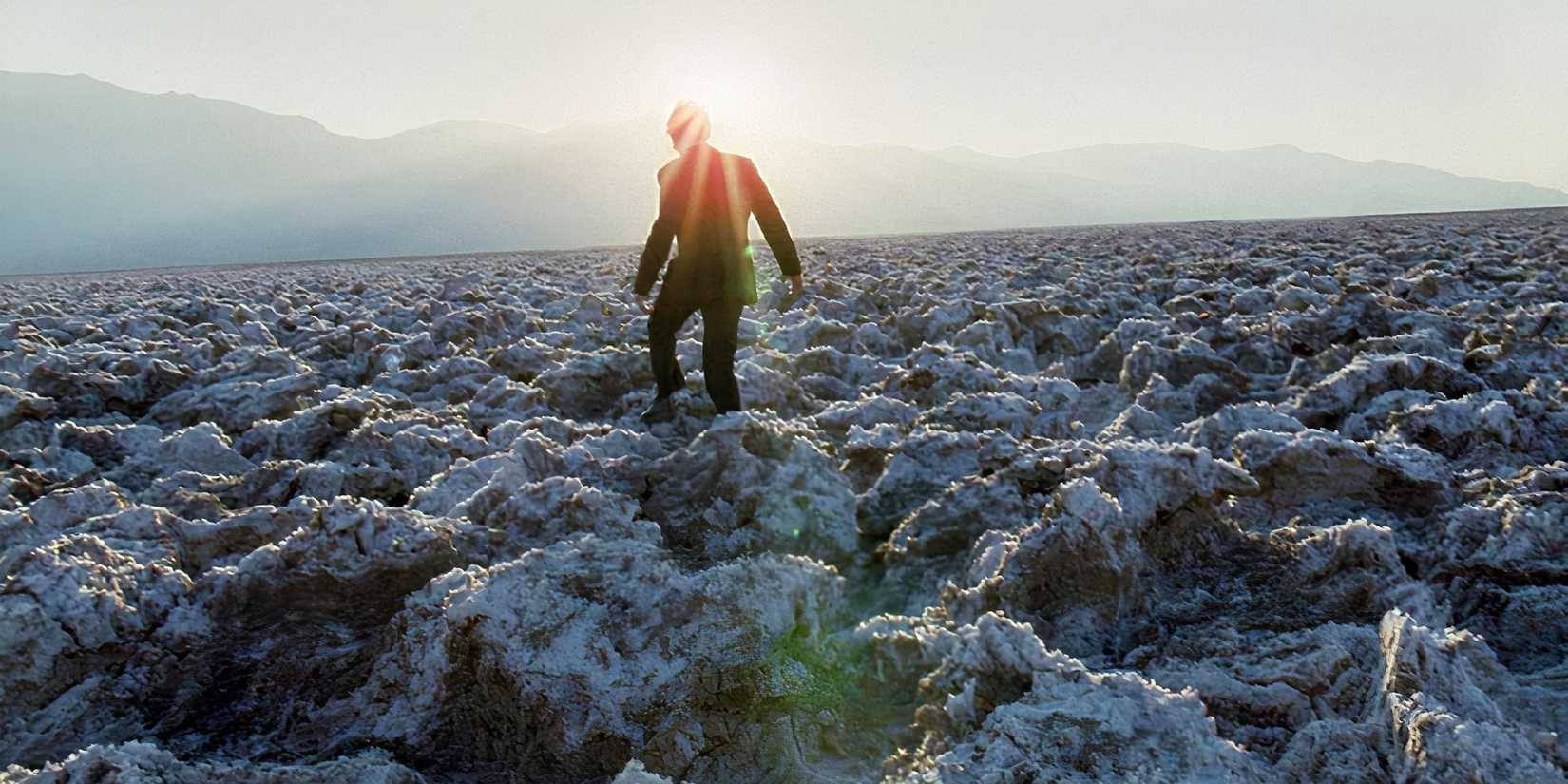
A man walking in The Tree of LifeImage via 20th Century Studios
The Tree of Life unfolds like a philosophical meditation, presenting fleeting moments as they coexist with the birth of stars and the sweep of eternity. At its core is Jack (played by Sean Penn and Hunter McCracken), a man recalling his boyhood surrounded by his stern father (Brad Pitt), nurturing mother (Jessica Chastain), and two brothers, set against vivid memories of both joy and trauma.
In The Tree of Life, ordinary gestures take on a larger-than-life significance, and intimate family moments turn into thoughtful explorations of memory and childhood. Explaining it to those who haven’t watched it yet isn’t an easy task. That said, it wouldn’t be wrong to argue that the effortless way it invites viewers into a dreamlike flow of sensations — whether through its poetic light, fluid camera movements, or the wide-angle shots — is perhaps the movie’s most defining trait. Quiet and mesmerizing, albeit definitely not everybody’s cup of tea, The Tree of Life is one of the most ambitious and beautifully shot films in recent memory. Director Terrence Malick’s earlier work, Days of Heaven, is worth mentioning as well for its equally fascinating visuals.
6
‘The Fall’ (2006)
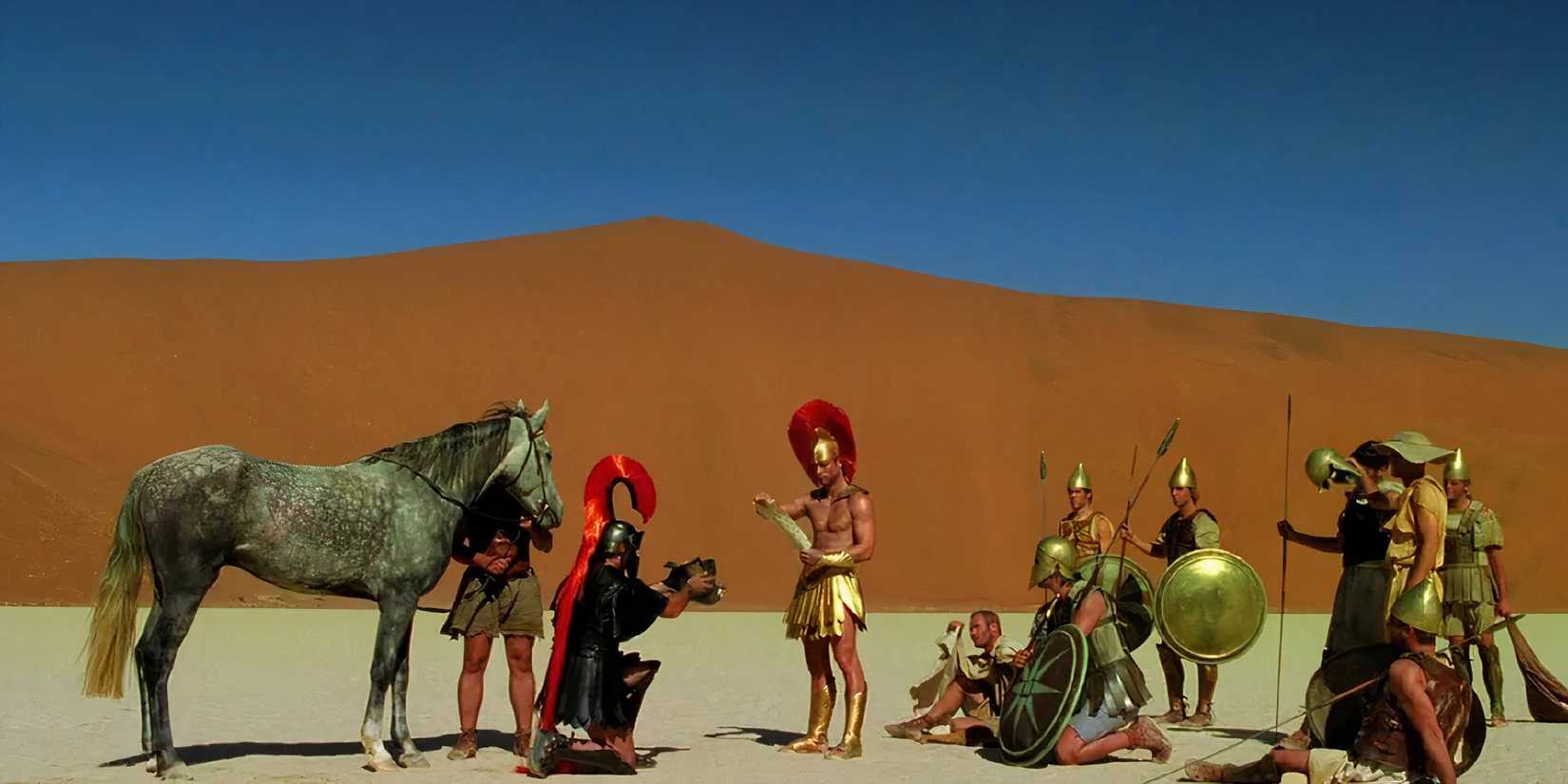
The cinematography of The FallImage via Roadside Attractions
Shot across more than 20 countries, visionary box-office bomb The Fall is a lavish odyssey where fantasy and reality fold seamlessly into one another. The result is a breathtakingly grand-scale epic that transforms real-world locations into otherworldly landscapes, with a unique narrative that follows a wounded stuntman (Lee Pace) in 1920s Los Angeles who befriends a curious girl (Catinca Untaru) in a hospital. As he spins a tale of heroes and villains, their worlds slowly intertwine.
The Fall isn’t your usual fairytale. It’s almost like the lovechild of a fever dream and a travelog, stitched together with a thread of genuine heart and absorbing storytelling. In many ways, Tarsem Singh’s movie is like living a storybook that pulls you in and takes you on a nonstop parade of jaw-dropping images. Beyond a film to be watched, The Fall is an experience to be immersed in, as well as a beautiful ode to the power of imagination.
5
‘Blade Runner’ (1982)
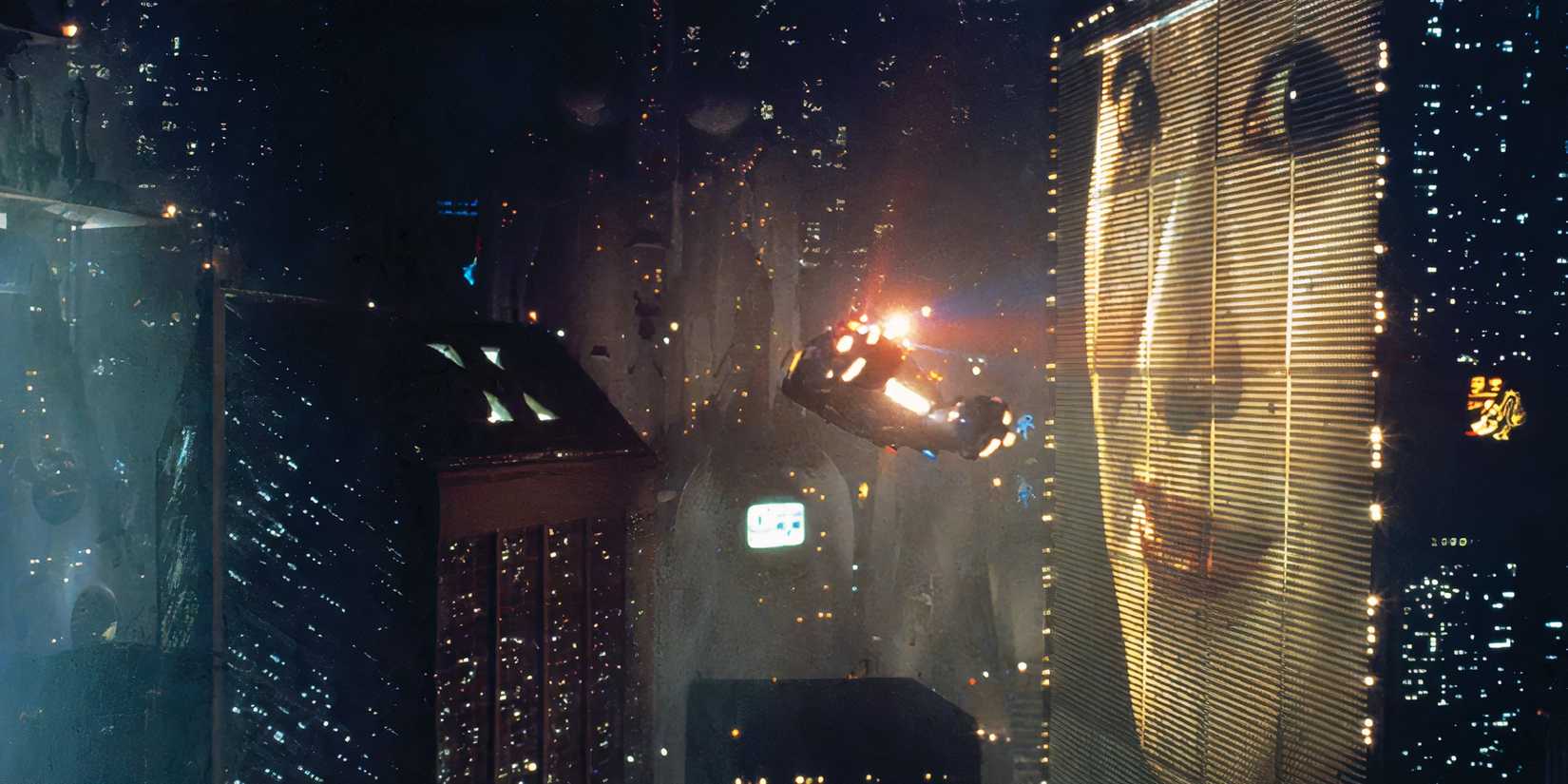
The cityscape in Blade Runner cinematographyImage via Warner Bros.
This seminal sci-fi noir imagines a dystopian Los Angeles in 2019, where replicants (bioengineered humans) blur the line between humanity and machine. At its center is Harrison Ford’s Rick Deckard, a weary Blade Runner tasked with “retiring” fugitive replicants, navigating a world of ambiguity and urban decay.
Drawing inspiration from graphic novels, Edward Hopper paintings, and Italian futurism, Blade Runner is a striking meditation on identity, memory, and what it means to be alive; part of why it works so well is its staggering visuals. Much like Fellowship of the Ring, the 1982 film is a masterclass in cinematic world-building, with strong shafts of light, deep shadows, and neon accents creating high-contrast visuals rooted in classic noir with an urban twist. Paired with innovative practical effects, Blade Runner is meticulously composed, becoming a benchmark in science fiction cinema. It’s worth noting, of course, that Denis Villeneuve’s 2017 sequel expands upon the original’s legacy by delivering equally captivating visuals.
4
‘Stalker’ (1979)
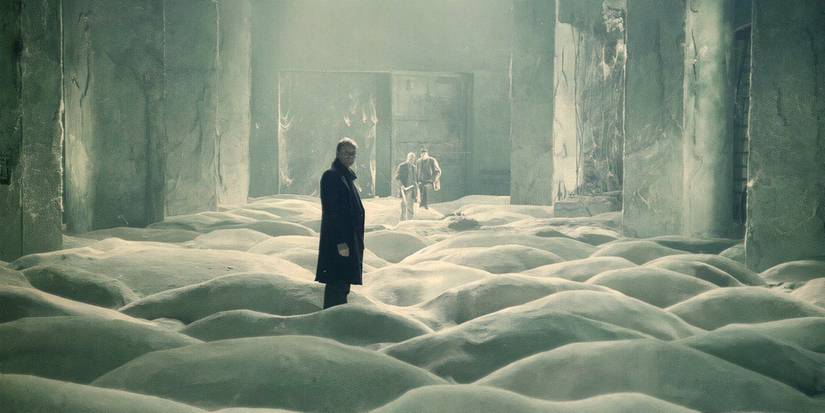
Men standing in a strange room in the Andrei Tarkovsky film ‘Stalker’ (1979)Image via Mosfilm
Directed by revolutionary filmmaker Andrei Tarkovsky, Stalker is a haunting journey into the mysterious “Zone,” a forbidden area rumored to fulfill the deepest desires of those who enter. At its center is a guide leading two men — a writer and a scientist — through this enigmatic landscape, exploring themes of faith, desire, and the search for meaning.
Stalker’s contemplative cinematography immerses audiences in a slow and hypnotic rhythm. The camera lingers and glides over natural landscapes that feel simultaneously serene and unsettling; every shot is meticulously composed with an intentional pace that encourages audiences to stop and fully absorb it. Like plenty on this list — especially The Tree of Life, which also leans philosophical — Tarkovsky’s iconic sci-fi is one to inhabit rather than merely watch. At its core, it is a powerful cinematic meditation on the mysteries and the fragility of existence, and it charms precisely because it doesn’t rush but takes its time instead.
3
‘Barry Lyndon’ (1975)
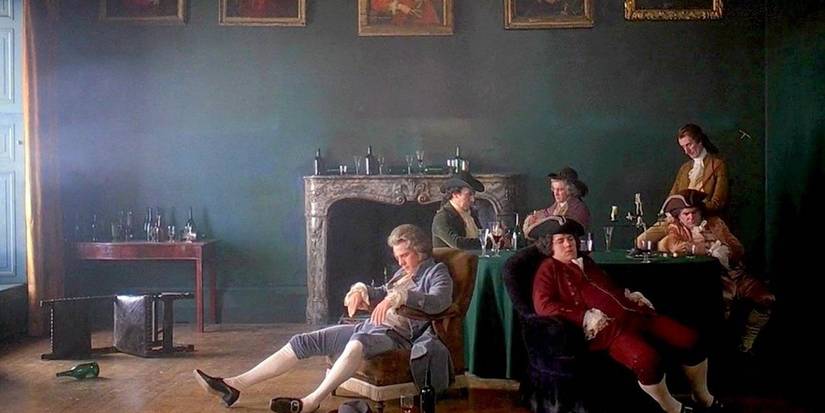
Partygoers lounging around in Barry LyndonImage via Warner Bros. Pictures
Following the rise and fall of the charming but morally ambiguous Redmond Barry (Ryan O’Neal), whose ambitions carry him from the gambling halls of Ireland to the courts of 18th-century Europe, Barry Lyndon set the benchmark for the meticulously crafted period drama, ranking among the most extraordinary entries in the genre. Through immaculate directing, Stanley Kubrick’s film transforms a personal journey into a sweeping meditation on fate, class, and the pursuit of fortune.
But Kubrick’s underrated masterpiece isn’t celebrated merely for its narrative — the visual artistry makes it one of a kind. Every frame is composed with painterly precision, evoking the color palettes, symmetry, and framing of 18th-century European paintings. What is more, Barry Lyndon was filmed across the lush landscapes of England and Ireland, fully embracing the unpredictability of natural weather and gracefully allowing rain and sunlight to shape the mood and texture of its scenes. Kubrick also pioneered the use of natural and candlelight illumination, famously shooting entire scenes in the glow of candles to replicate the intimate lighting of the era.
2
‘Lawrence of Arabia’ (1962)
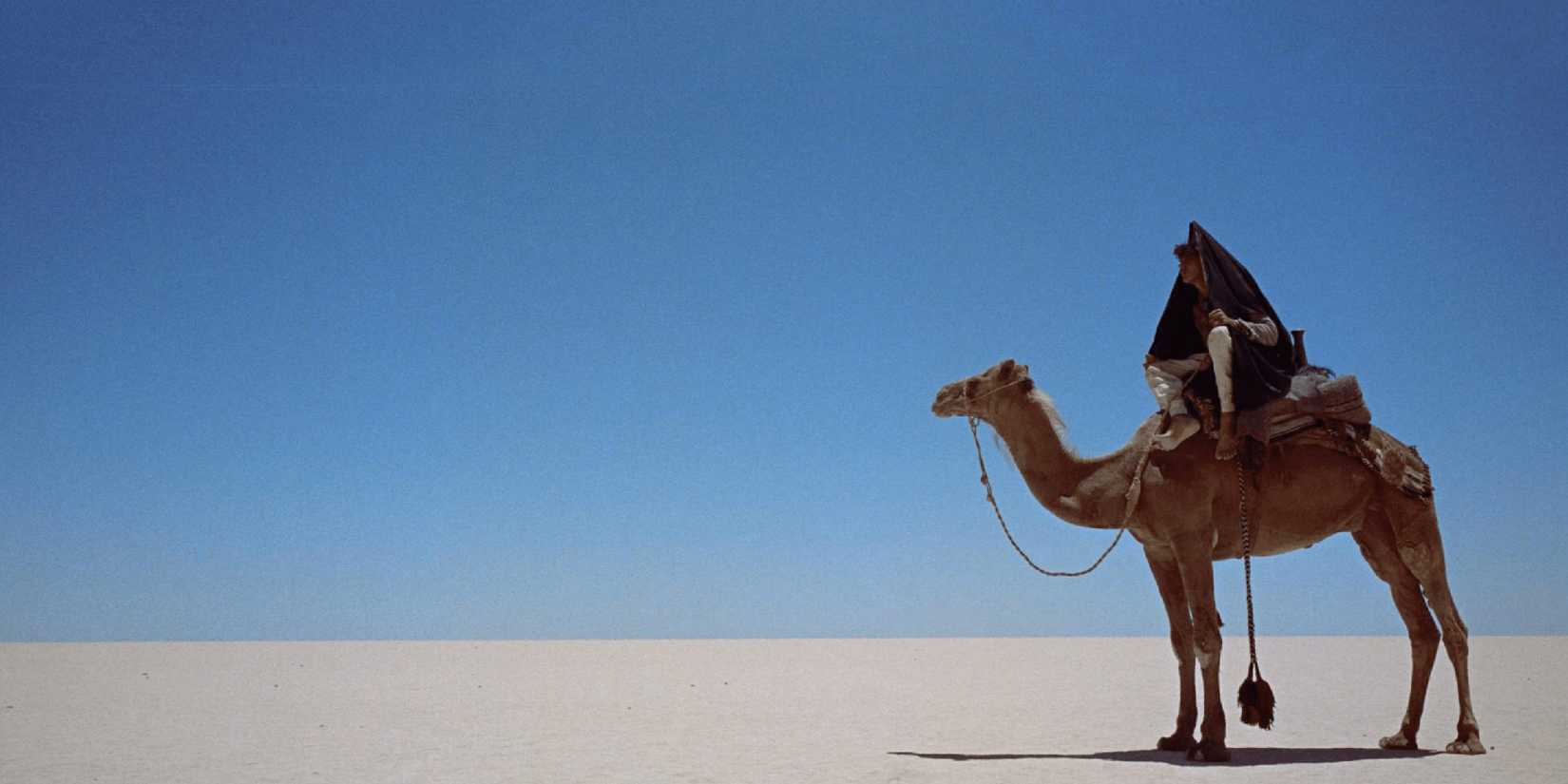
A man riding a camel in Lawrence of Arabia.Image via Columbia Pictures
Chronicling the enigmatic T.E. Lawrence (Peter O’Toole), a British officer whose exploits in the Arabian Desert during World War I blur the line between heroism and obsession, Lawrence of Arabia is as much a character study as it is a visual spectacle, delivering equal amounts of political intrigue, cultural collision, and personal transformation. Far from just a movie, David Lean’s groundbreaking 1962 — yes, 1962! — film is a full-on immersion into the raw and isolating beauty of the desert.
Shot using Super Panavision 70, with deep shadows and brilliant highlights revealing the golden sands under the blue sky, Lawrence of Arabia sucks audiences right into its vast and unforgiving world. Paired with the film’s dynamic movement and legendary editing, most famously exemplified by its iconic match cut, the result is nothing short of epic. No wonder Lawrence of Arabia remains a timeless masterclass in visual storytelling — at its core, it reminds us how cinema, even the great classics, can still feel like a fresh adventure.
1
‘2001: A Space Odyssey’ (1968)
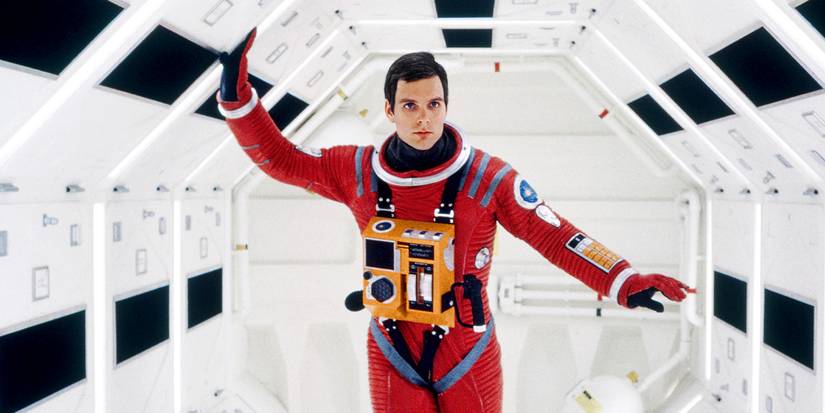
Keir Dullea in a red spacesuit walking through well-lit space pod in 2001: A Space Odyssey.
Image via Metro-Goldwyn-Mayer
Tracing humanity’s evolution from prehistoric apes to space explorers, 2001: A Space Odyssey is a meditation on intelligence, existence, and the unknown. Above all, though, it is a triumph of cinematic spectacle. Kubrick’s film is cinema in its purest form; a visual experience that can not be successfully translated to any other medium.
There is no doubt that this Kubrick picture has had an immeasurable influence on both visuals and storytelling, and decades later, it still holds up undeniably well. With massive rotating sets to simulate zero gravity, pioneering front projection techniques, and painstakingly composed shots that turn spacecraft into elegant sculptures in motion, 2001’s visuals are fascinating even today — perhaps because more than half of the budget was devoted to special effects at the time. In many ways, 2001 has defined what cinema can achieve, and the truth is that it remains unmatched in its ability to awe and inspire, particularly in the science fiction genre.

